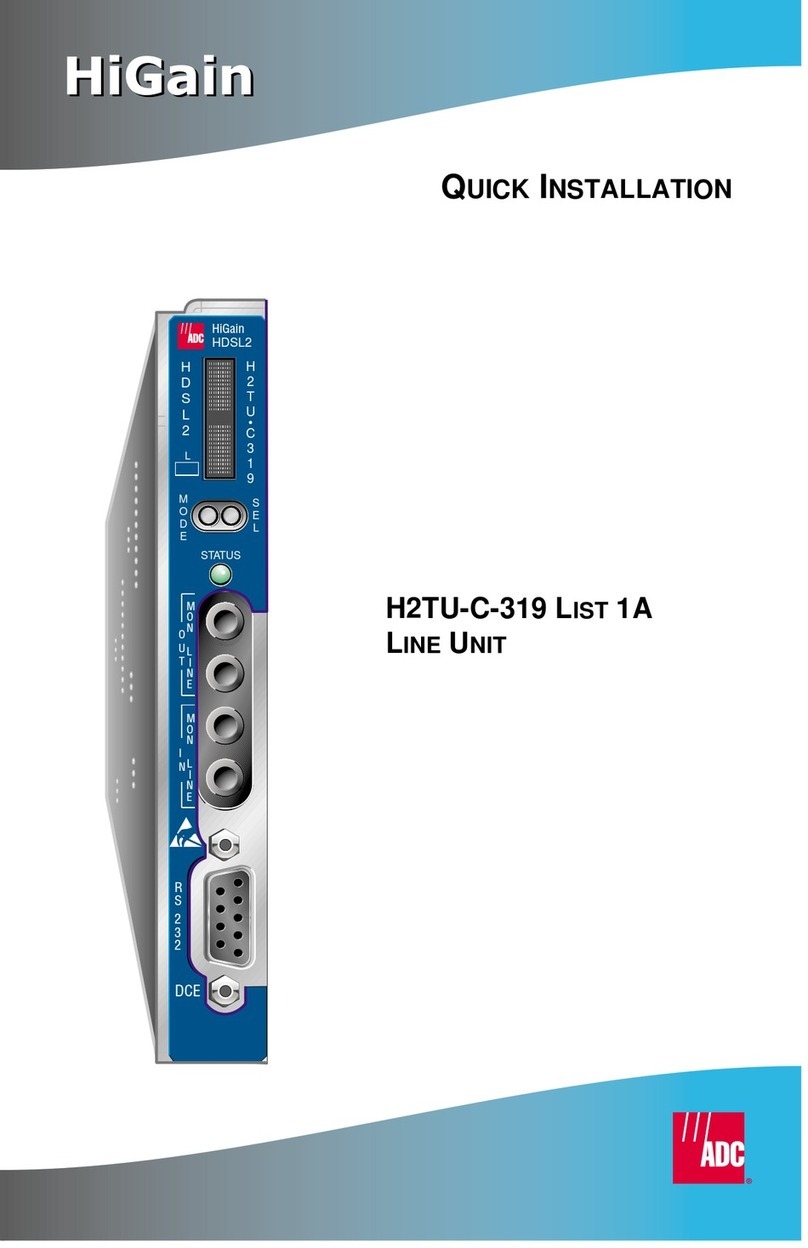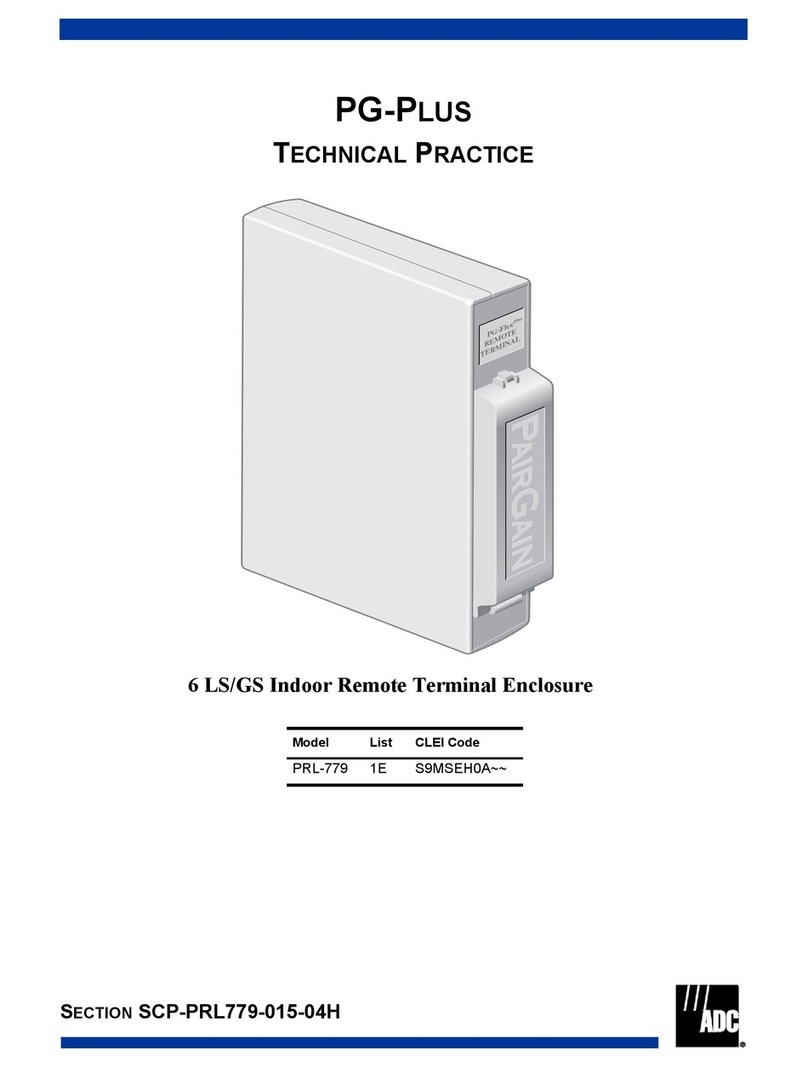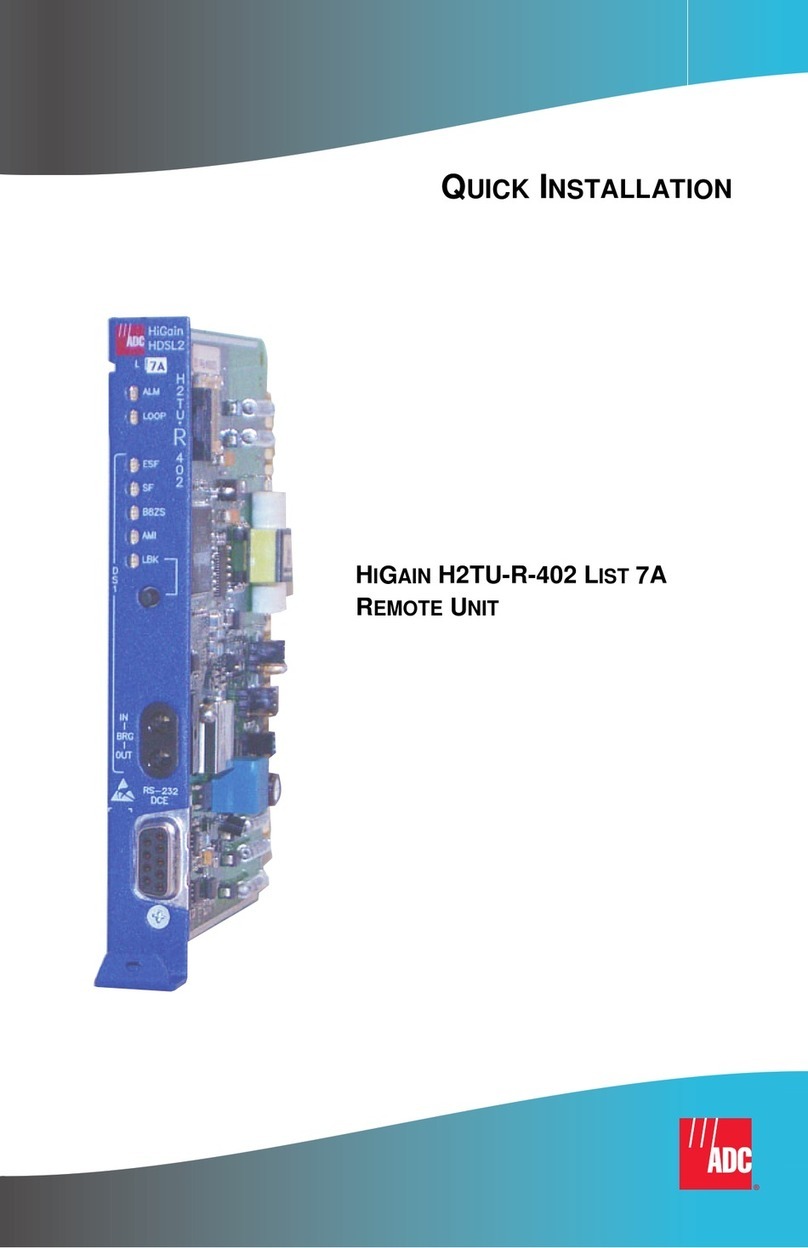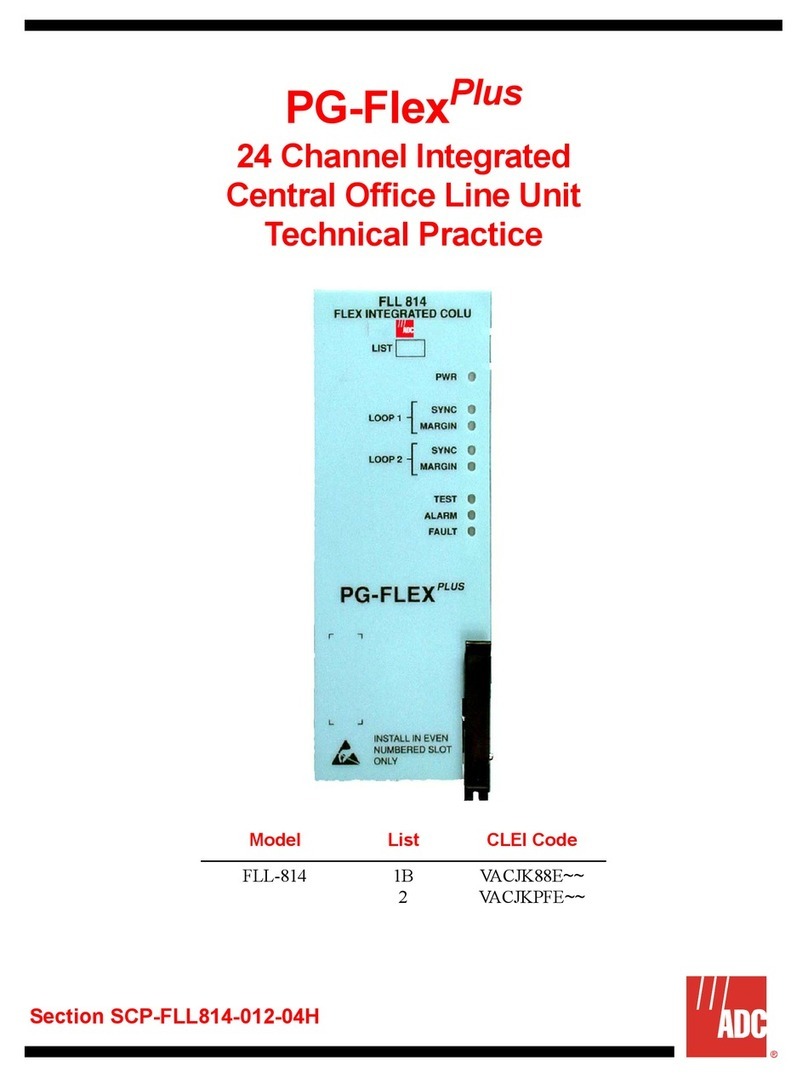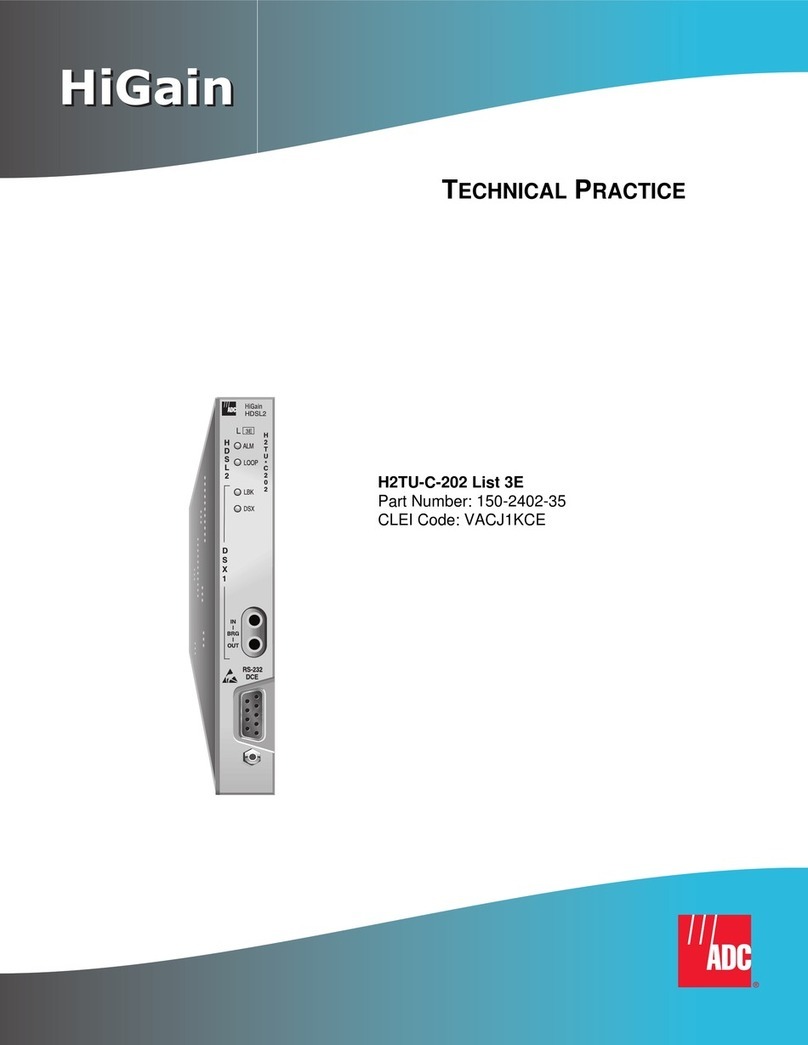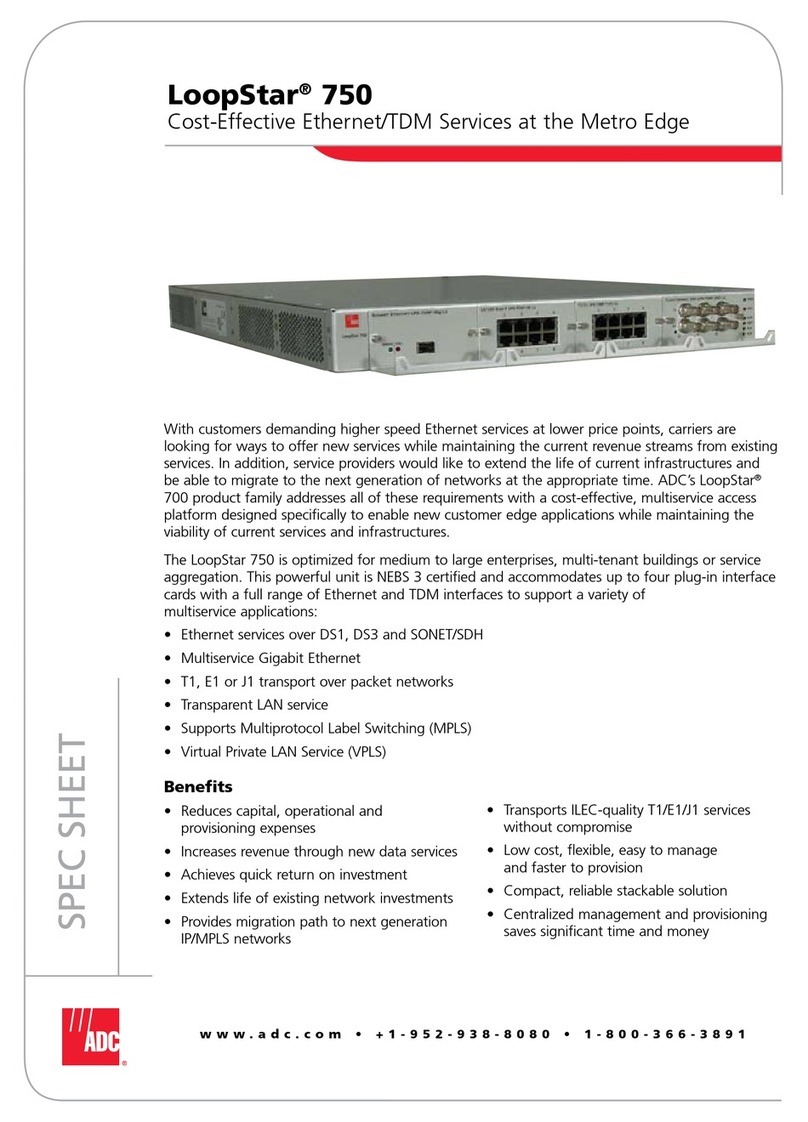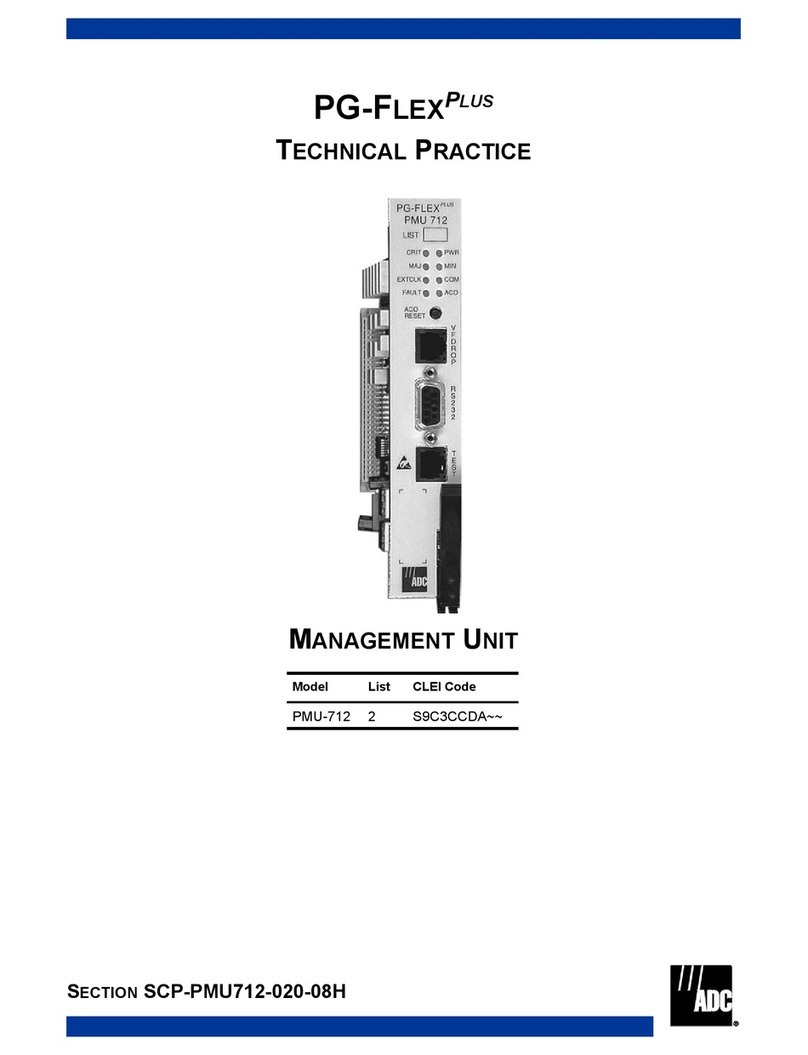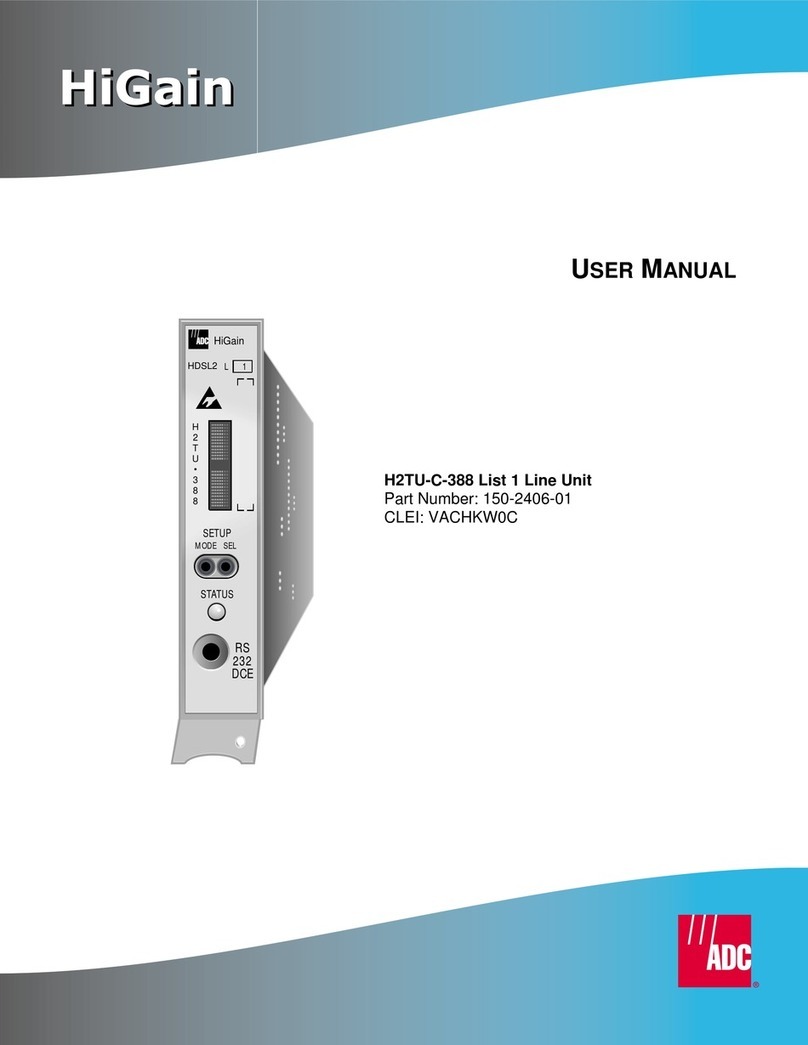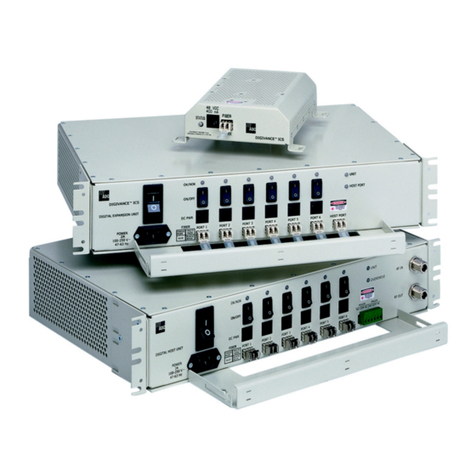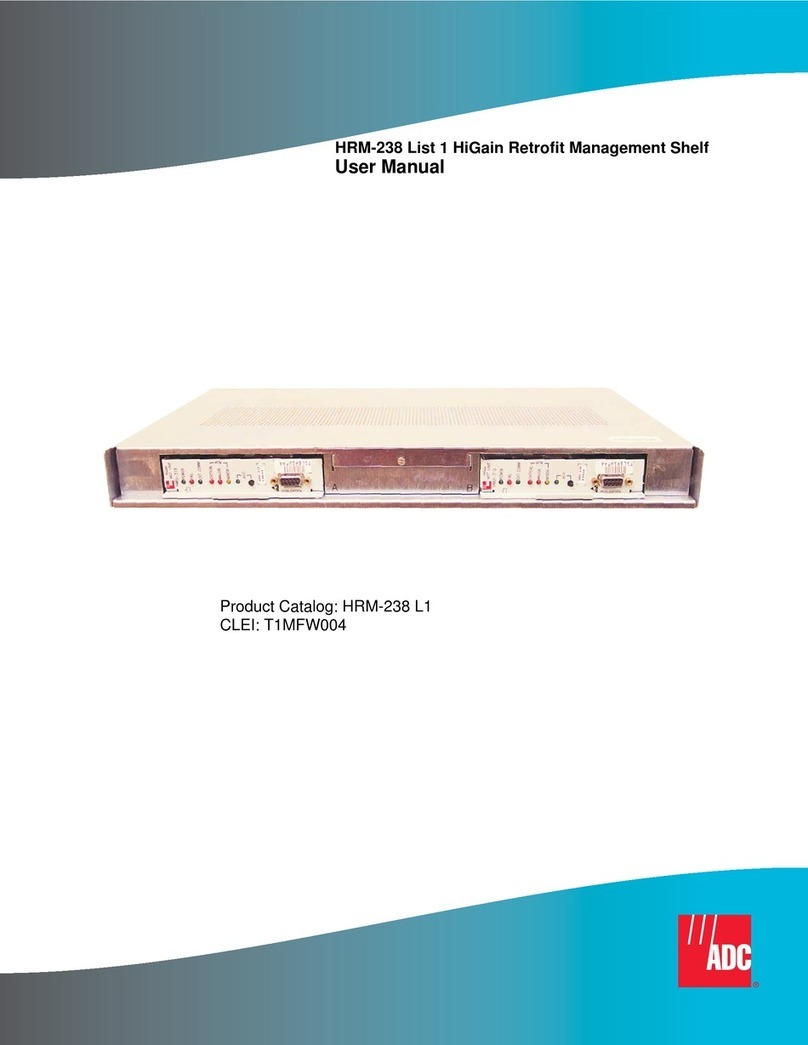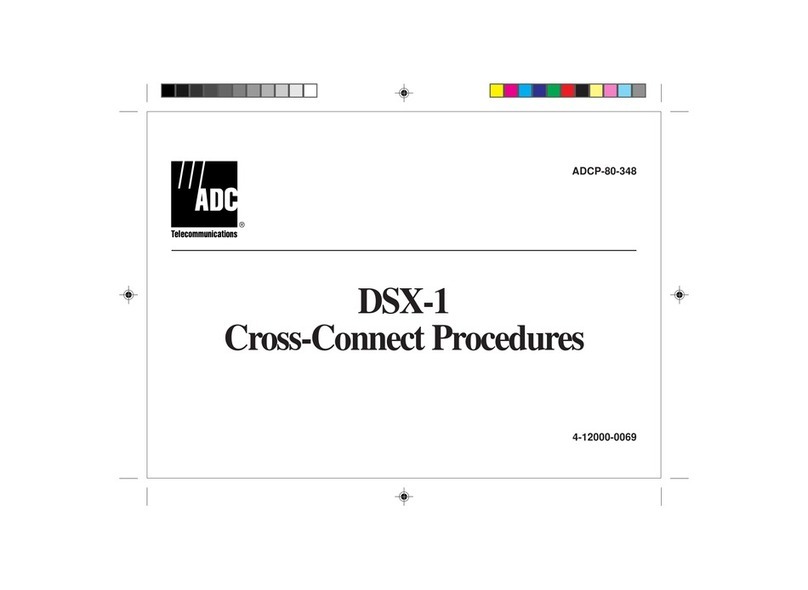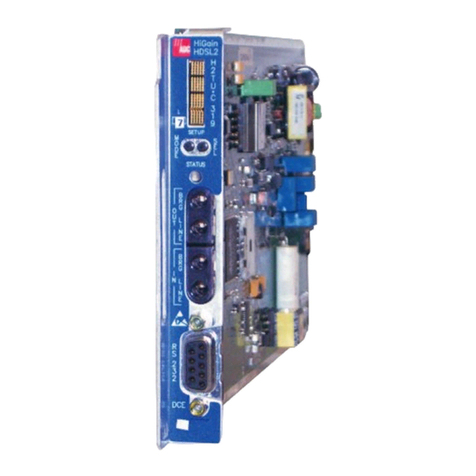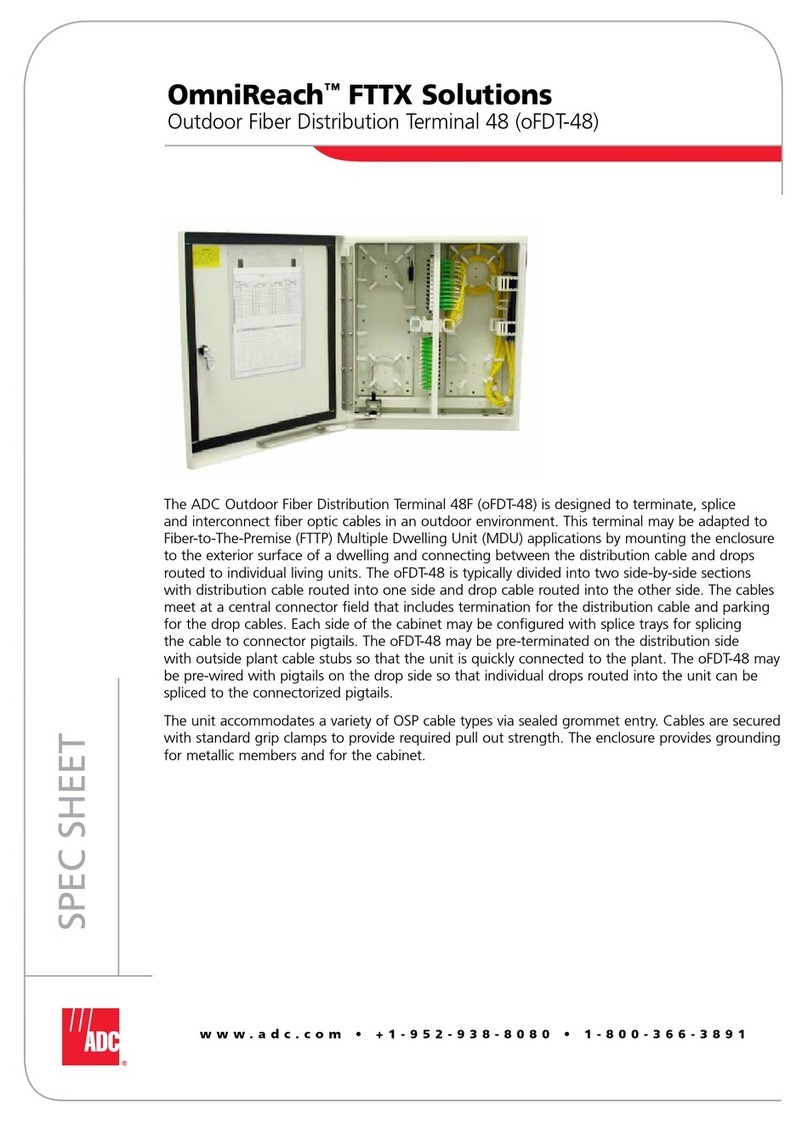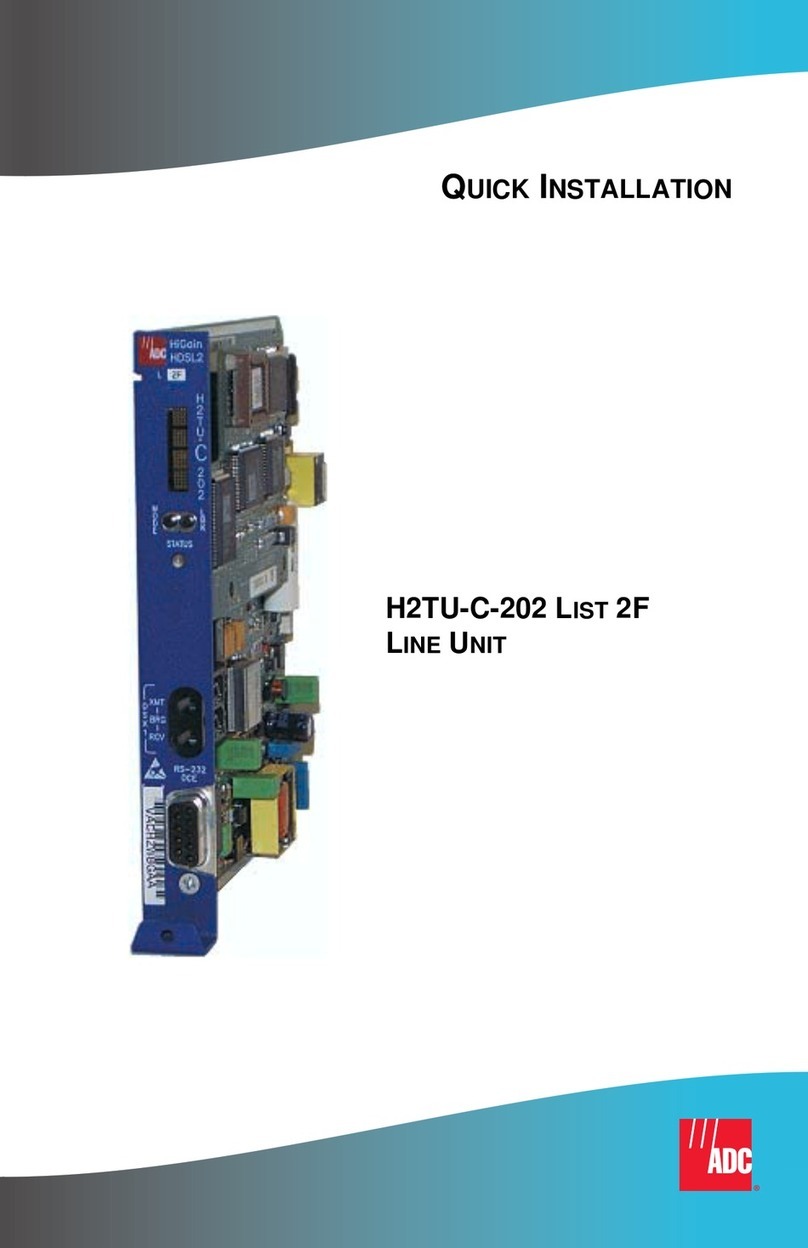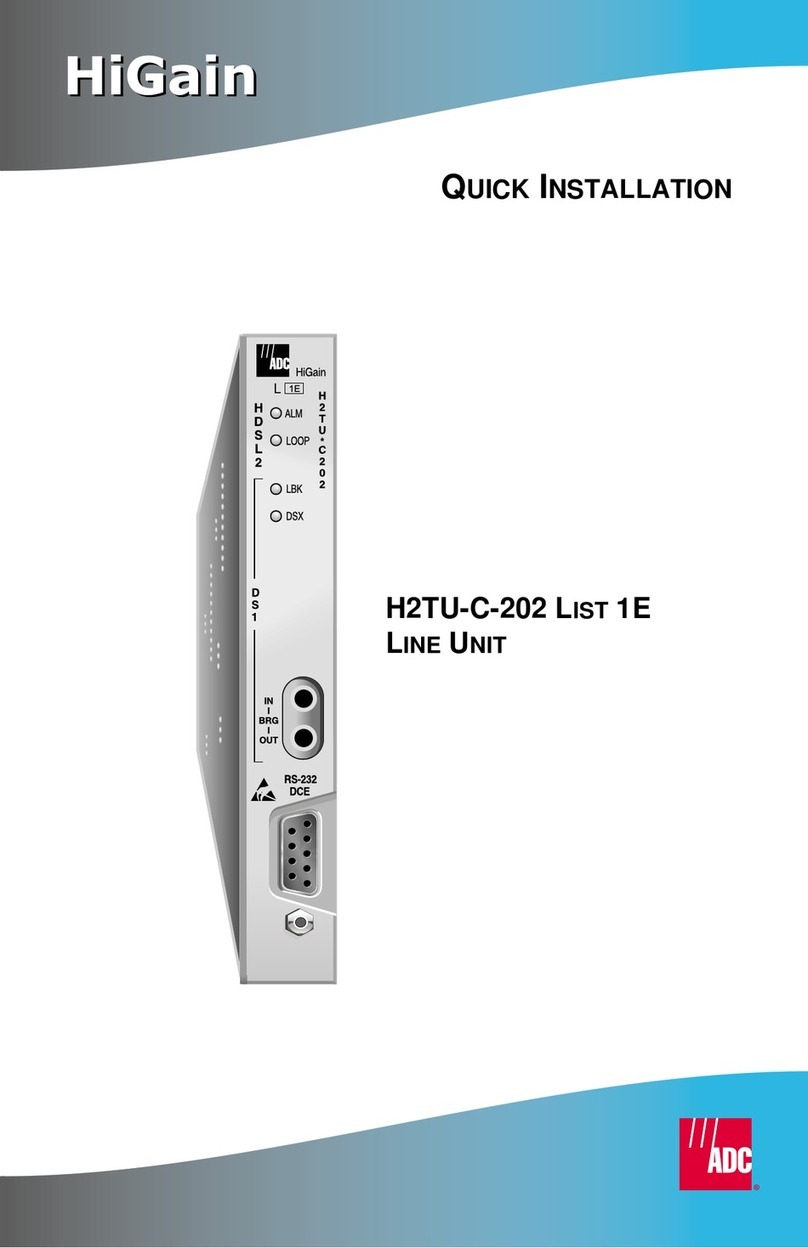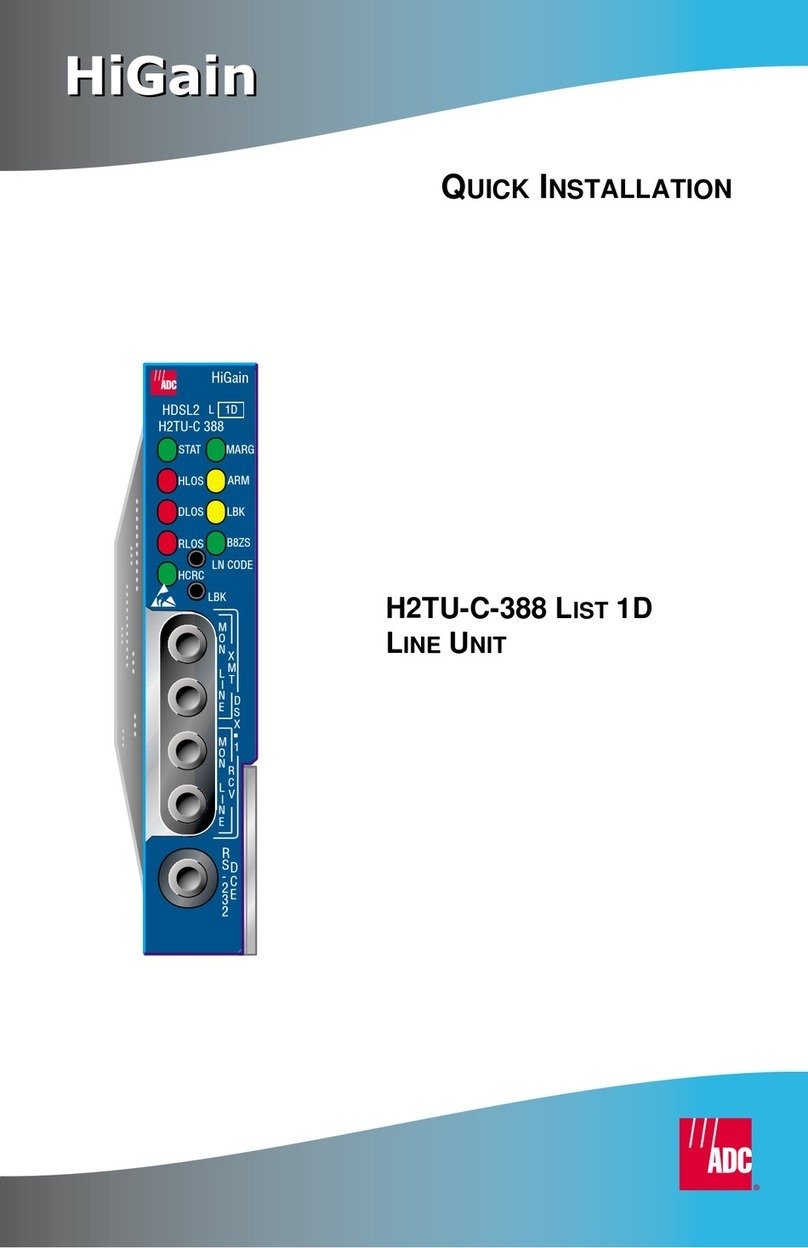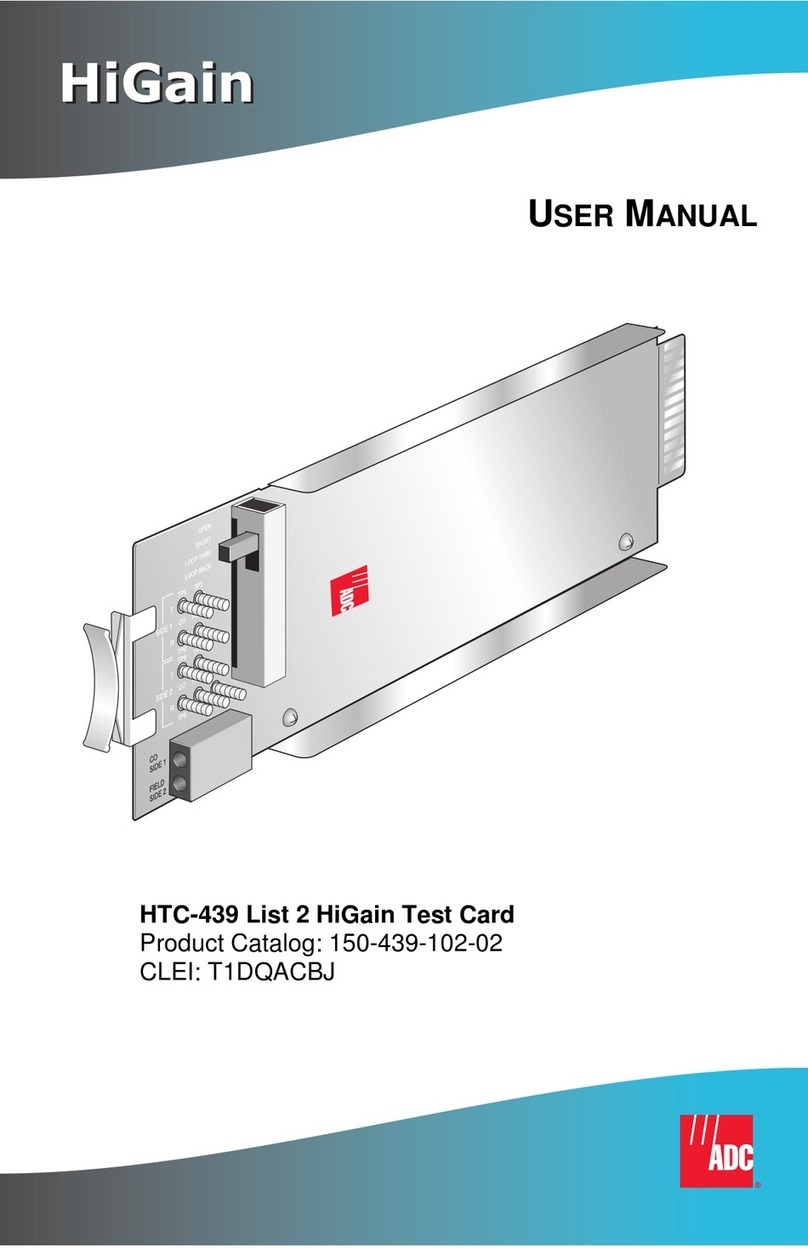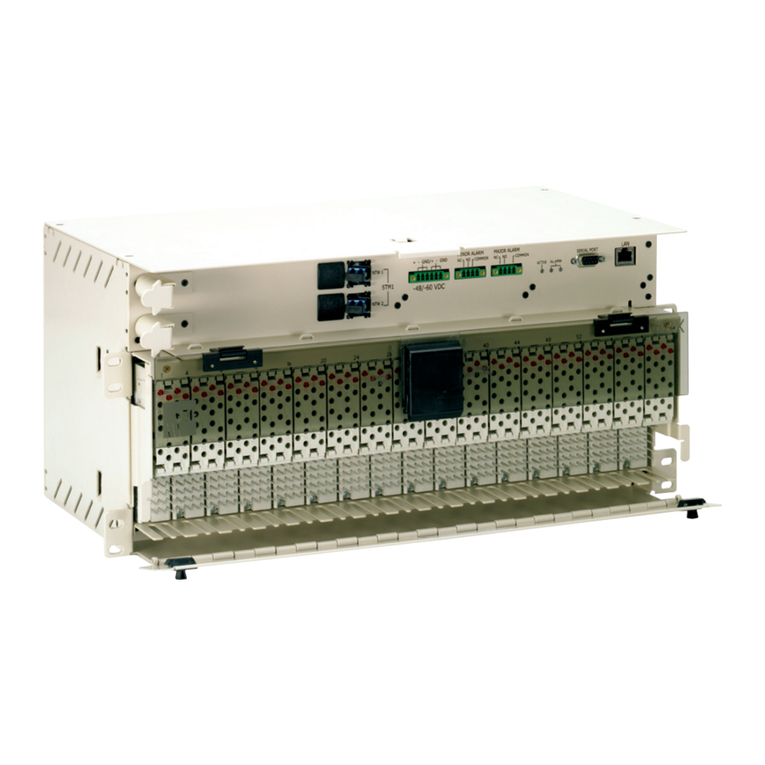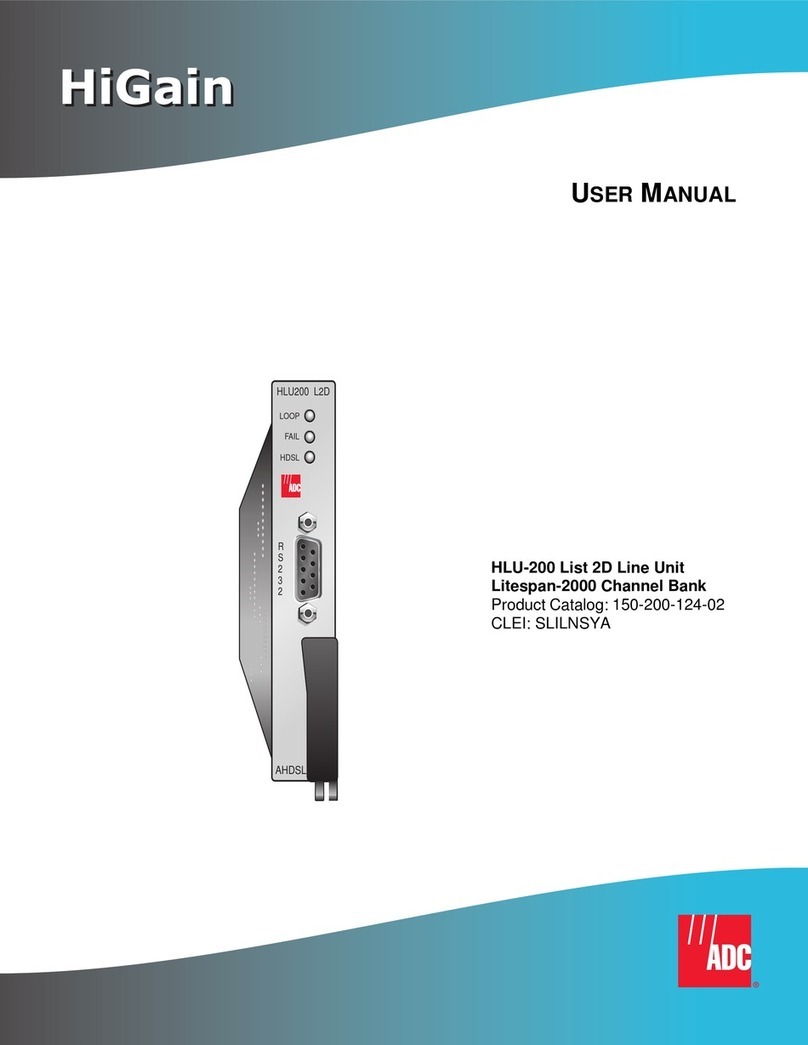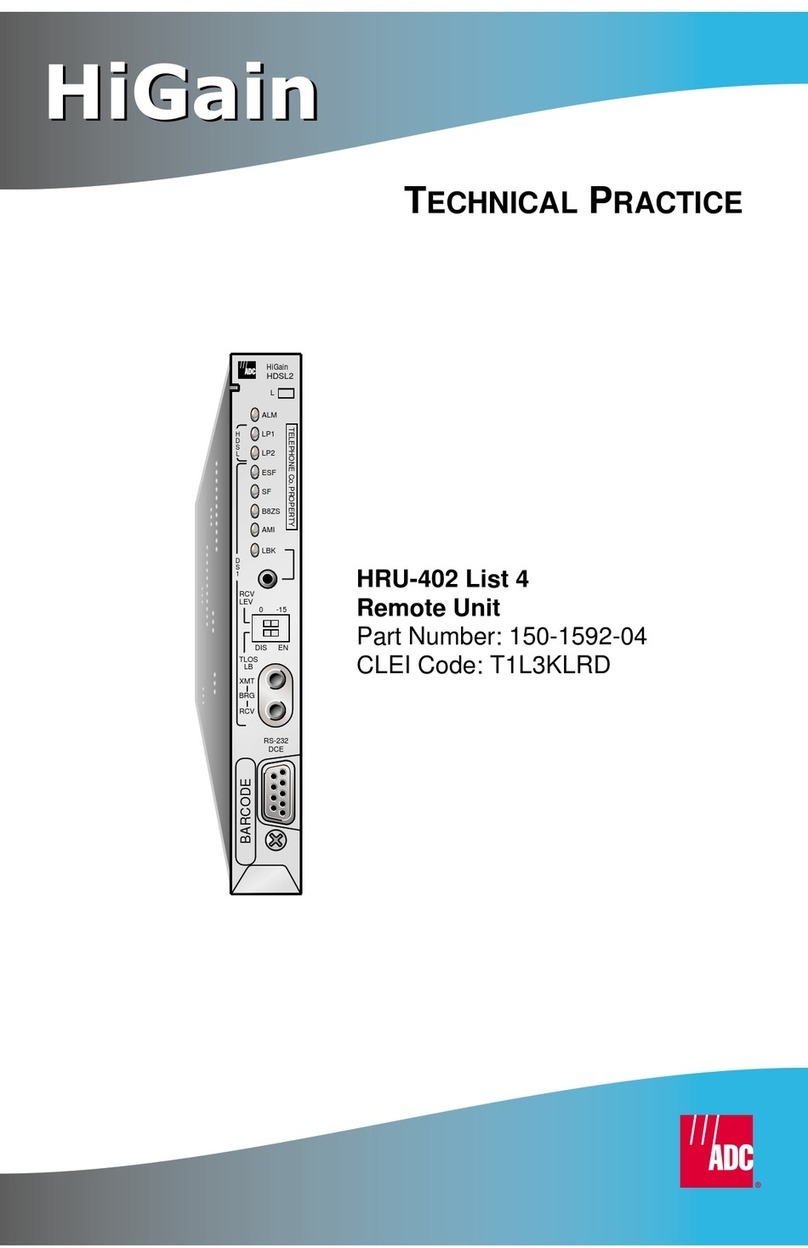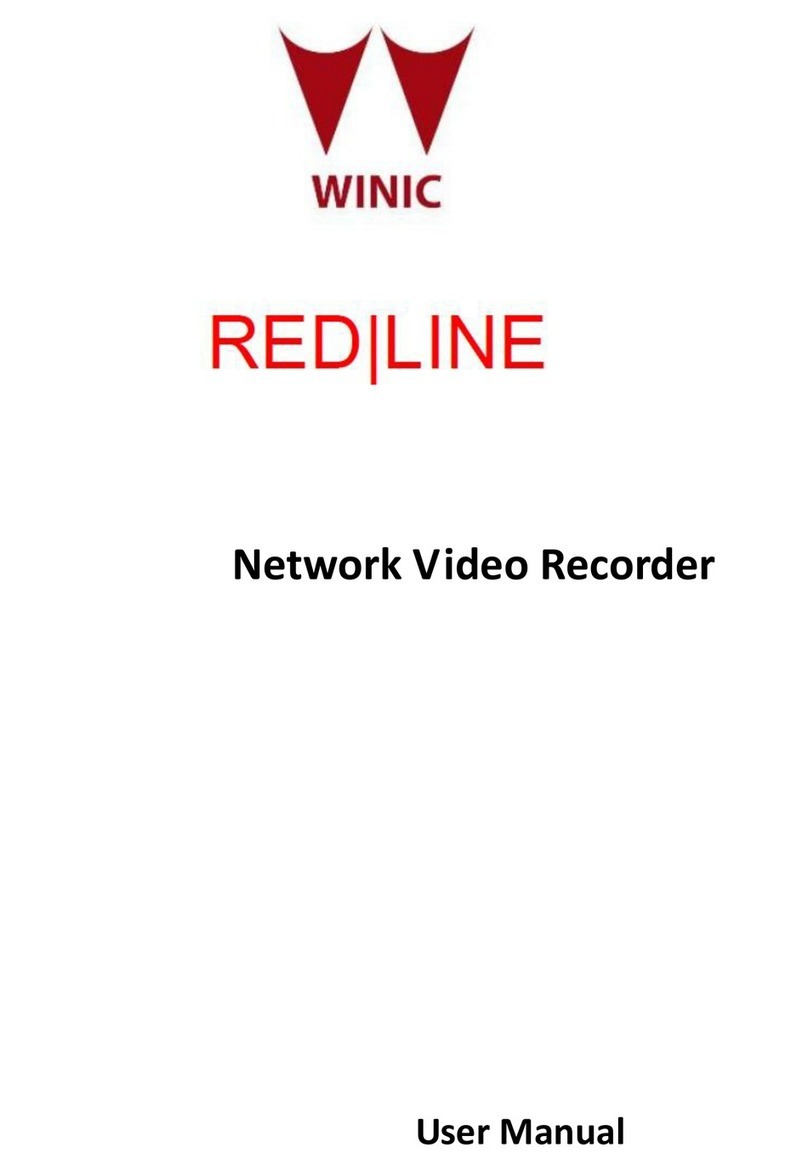
VERIFICATION
Once the H2TU-R-402 is installed, verify that it is operating properly by monitoring the
Status LEDs on the front panel.
LOGGING ON TO THE MAIN MENU
The H2TU-R-402 supports local and remote logon through a maintenance terminal
(VT-100 or a PC running VT-100 terminal emulation software) connected to the craft port
on the H2TU-R-402 front panel.
The H2TU-R-402 accesses menus and screens that are replications of those viewed at the
H2TU-C. You can also view system settings and inventory, initiate loopbacks, monitor
performance, and configure the circuit.
To connect to a maintenance terminal:
1Connect a standard 9-pin serial cable to the RS-232 craft port on the H2TU-R-402 List
5E front panel.
2Connect the other end of the cable to the serial port on the maintenance terminal.
3Start a terminal emulation program such as Procomm (emulating a VT100 terminal).
4Configure the maintenance terminal to the following comunications settings:
•9600 baud
•No parity
•8 data bits
•1 stop bit
•Hardware flow control to OFF
5If necessary, press + to refresh to HiGain HDSL2 logon screen.
LOOPBACK TESTING
Initiate loopback testing from the maintenance terminal menus or by using inband codes.
The inband codes shown below can be sent by a test set. For more information, refer to the
technical practice for the H2TU-C line unit.
Status LED Descriptions
LED Status Indicates
Alarm (ALM) LED Shows alarm states for remote and local Loss of Signal (LOS).
Solid red Indicates a Loss of Signal (LOS) condition at the T1 input of the H2TU-R-402.
Blinking Indicates an LOS condition at the T1 input of the H2TU-C line unit.
HDSL2 LED Displays HDSL2 Loop condition.
Solid green Indicates HDSL2 loop is in sync.
Blinking once
per second Indicates the HDSL2 loop is trying to acquire sync.
Blinking 4 times
per second Indicates a margin alarm condition on the HDSL2 loop.
Blinking 10 times
per second Indicates a Cyclic Redundancy Check (CRC) error on the HDSL2 loop.
OFF Indicates no activity on the HDSL2 loop.
DS1 Framing (FRM)
LEDs (ESF and SF) Indicates framing patterns. If DS1 signals are not detected, the ESF and SF LEDs
will not light.
ESF LED = Solid green Indicates Extended Super Frame (ESF). The LED blinks once per second when a
frame error occurs.
SF LED = Solid green Indicates Super Frame (SF). The LED blinks once per second when a frame error
occurs.
OFF Indicates unframed or no signal.
DS1 Code LEDs (B8ZS
and AMI) Indicates DS1 code options. If DS1 signals are not detected, the ESF, SF, B8ZS,
and AMI LEDs will not light.
B8ZS LED = Solid
green Indicates that the DS1 line code option is set to Bipolar with 8-Zero Substitution
(B8ZS). The LED blinks once per second when a string of excessive zeros is
detected.
AMI LED = Solid green Indicates that the user DS1 line code option is set to Alternate Mark Inversion
(AMI). This LED blinks once per second when a Bipolar Violation (BPV) is detected.
Loopback (LBK) LED Shows loopback states to and from the network and to and from the Customer
Interface (CI).
Solid yellow Indicates Network Remote (NREM) loopback, SmartJack (SMJK) loopback, or
Transmit Loss of Signal (TLOS) loopback.
Blinking once
per second Indicates Customer Local Loopback (CLOC) loopback state.
Blinking 4 times per
second Indicates the H2TU-R is in an Armed state.
ALM
L
ESF
SF
LOOP
B8ZS
AMI
LBK
H
2
T
U
*
R
4
0
2
D
S
1
IN
BRG
OUT
RS-232
DCE
Alarm LED
Loopback LED
CLEI/ECI bar code label
Configuration number label
HDSL2 LED
DS1 framing LEDs
DS1 line code LEDs
Craft port provisioning
To access all system maintenance, provisioning
and performance screens, connect a standard
9-pin terminal cable between the serial port on a
PC and the H2TU-R craft port.
Loopback control button
Press the button for 5 seconds to activate a loopback
towards the network and the customer (NREM and CLOC).
The unit can be looped down by either
pressing the LBK control button again for 5 seconds, by
the standard loopdown inband messages, or by the
maintenence terminal.
Any existing loopback is terminated before these loopbacks
are activated.
Extraction handle
Use to remove the H2TU-R-402 from
its slot.
27
25
23
21
19
17
15
13
11
9
7
3
5
1
Tip
Ring
Factoryuseonly
Factoryuseonly
Factoryuseonly
Ring1
CircuitGround
Ring
DS1IN
Tip
Tip1
ChassisGround*
ChassisGround*
28
26
24
22
20
18
16
14
12
10
8
4
6
2
55
53
51
49
47
45
43
41
39
37
35
32 31
56
54
52
50
48
46
44
42
40
38
36
34
30
33
29
Active pins are highlighted in black.
* Chassis Ground may be tied to Earth Ground according
to local practice.
DS1OUT
Card-edge connector
DS1 transmit (IN) and receive (OUT)
bridging jacks
Provides non-intrusive bridging jack access to (IN) and
from (OUT) the HDSL2 span at the DS1 interface.
Allows monitoring of the T1 payloads.
(Inside handle)
9600 baud
8 data bits
No parity
1 stop bit
Hardware flow control: OFF
Terminal emulation:VT-100
MaintenanceTerminal Modem Settings
HDSL2
Span
5E
List number
Indicates the list number of the H2TU-R-402.
HiGain
HDSL2
Monitor Performance Event Log Config Inventory Report Rlogon Help
+------------------------------------------+
||
| ADC DSL Systems, Inc. |
| HiGain HDSL2 |
||
| Voice: 800.638.0031 |
| Fax : 714.832.9924 |
+------------------------------------------+
ID: xxxx--xxxx--xxxx—-xxxx 02/01/2001 12:30:01 H2TU-C System: OK___
Type the first letter To view:
onitor Monitors loopbacks and alarms, and provides a graphical representation of circuit
activity, including ES, UAS, SES, and line code.
erformance Performance and alarm histories for current, 25-hour, 48-hour, or 31-day periods for
either the DS1 or HDSL2 interface.
vent Log Identifies the 100 most recent system events and reports the date and time of
occurrence.
onfig Standard configuration options, ADC options, date and time setting, and a reset option.
nventory Product information about the various devices that are in the system and lists circuit
and device identifications.
logon Remote log on can be performed from the H2TU-R or H2TU-C. To log off the remote
unit, press . “Rlogout”changes to “Rlogon.”
elp Glossary, a list of navigational keys, and ADC contact information.
Initial provisioning of the HiGain HDSL2 system is performed at the
H2TU-C line unit. For more information about the HiGain screens,
provisioning, and troubleshooting, contact Customer Service to
obtain a copy of the applicable technical practice.
A3LB Loopback Commands
Name Description Binary Code (a) (Hexadecimal Equivalent)
(a) The leftmost bit arrives first in all sequences. The detection algorithm functions reliably
with a random 10-3 Bit Error Ratio (BER) on the facility.
NLOC H2TU-C loopup from NI 1111-1111-0001-1110 (FF1E)
CREM H2TU-C loopup from CI 0011-1111-0001-1110 (3F1E)
NREM H2TU-R-402 loopup from NI 1111-1111-0000-0010 (FF02)
CLOC H2TU-R402 loopup from CI 0011-1111-0000-0010 (3F02)
CTRL R
M
P
E
C
I
RR
H
Network Customer
Premises
Activate loopback using
one of the following:
• Test Set
• H2TU-C MODE and
SEL pushbuttons
• Maintenance Terminal
Activate loopback using
one of the following:
• Test Set
• LBK
pushbutton
• Maintenance Terminal
H2TU-R
H2TU-C H2TU-R
NLOC NREM
SMJK
TLOS CLOC
CREM
